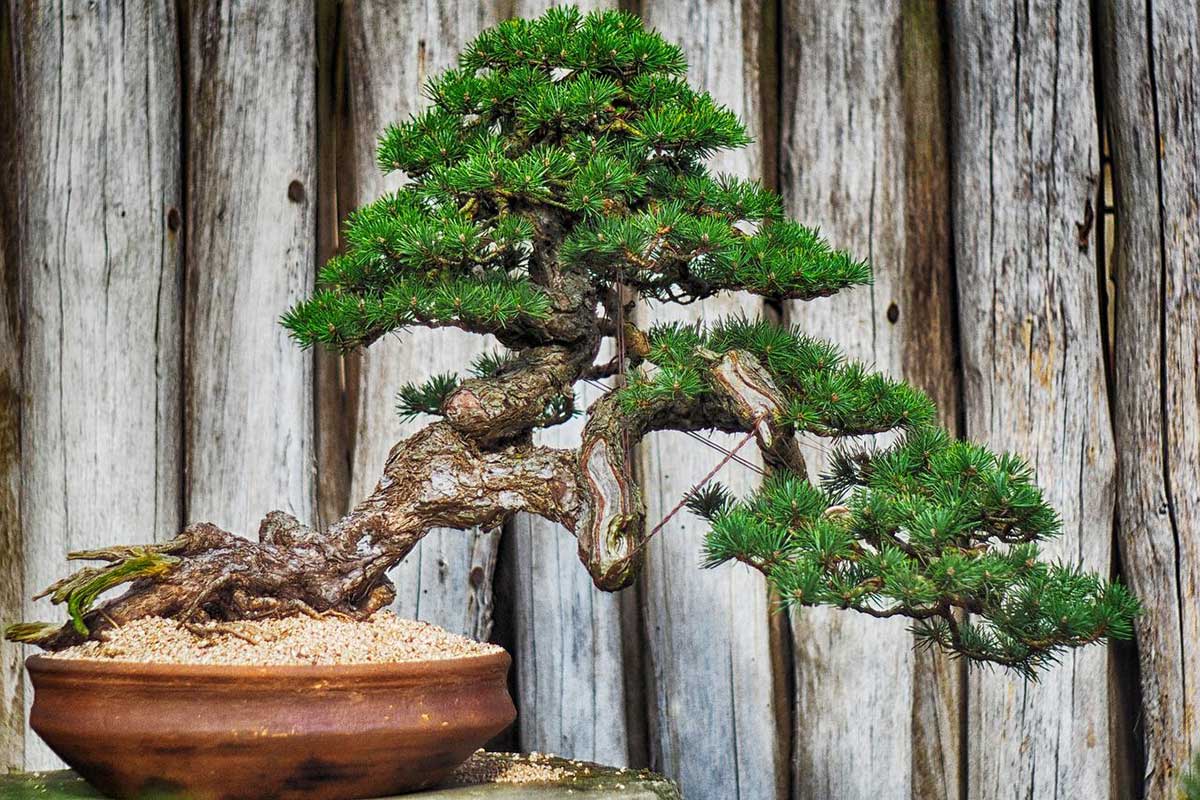The word bonsai in Japanese translates to “tray planting.” It’s an artistic hobby and traditional Japanese art of growing certain shrubs and trees in small, shallow, tray-like containers to give the appearance of a mature and older tree in a pot. Patience is key in the art of cultivating these miniaturized trees. So, you want to ensure you’re caring for your bonsai well and have the right pot for the best health of the trees.
Do bonsai tree pots need drainage holes? What size pot should my bonsai be in? Find out answers to these questions and more on how to care for your miniature bonsai landscape.
Key takeaways
- Drainage holes in bonsai tree pots help improve soil aeration and prevent root rot
- Traditional bonsai pots are stoneware burned porcelain or ceramic and maintain the right size according to the Japanese art form
- Use proper soil and repot your bonsai tree when the roots start circling the root system
Do bonsai tree pots need drainage holes?
Yes, it’s better for the plant’s health. Proper drainage is important to prevent root rot since your bonsai tree is growing in a constrained environment. Traditional bonsai pots will have at least one drainage hole. However, having 2-4 four holes can also ensure proper soil aeration to help your bonsai tree remain healthy. Some bonsai trays also have a drainage mesh of small holes.
When part of the art form, the pots need drainage holes. However, a bonsai plant can grow in a pot without drainage holes but will require more attention to maintain root growth and health.
Why do bonsai need shallow pots?
Bonsai trees are grown in shallow pots, especially if you’re growing them from seeds, to prevent the roots from growing too quickly. The shallow pot helps develop lateral roots. In contrast, a deeper pot will allow the roots to keep spreading and expanding, and it may not work as a bonsai miniature landscape.
Shallow containers also help maintain steady tree growth, so it’s easier to prune and care for as well as keep the tree small. Even established trees can become much larger if planted in a larger pot.
Can you grow bonsai in normal pots?
Bonsai tree pots are designed to meet the specific requirements of the art form, including having proper wiring, drainage holes, and size. Each component is practical for bonsai tree care.
Classic bonsai pots are made of porcelain or ceramic that is stoneware burned, so it’s insensitive to changes in temperature as well as absorbs and holds no water in the material. However, you can purchase pots made from concrete and plastics. Be cautious with certain metal pots since metals may release toxins into the soil.
What size pot should my Bonsai be in?
Selecting the right container size is important to the art of bonsai tree growing. You want a good balance, so your bonsai looks right in the container. The pot should leave an inch between the sides of the container and the tips of the root.
Another good guide when choosing your bonsai pot is that the width of a circular pot is around a third as wide as the tree’s height. A rectangular or oval pot should be around two-thirds as wide as the tree’s height. If you want a short tree with a wide spread, apply the rule to the canopy instead of the tree’s height.
How do I know if my bonsai tree needs repotting?
How often you repot your bonsai depends on the plant species and growing location. Repotting will help the trees grow healthier, especially to change out old soil. Some trees can go years between repotting, including more mature, older trees needing repotting every 3 to 5 years. While other trees may need repotting once or twice a year.
When you check and prune the roots, you don’t need to repot the tree if the roots are still contained within the soil. If the roots are circling the root system, your bonsai tree needs repotting. It’s best to repot during early spring when the tree is still dormant. Some species can also be repotted in the fall but avoid repotting in summer or winter.
What kind of soil do bonsai trees need?
There are three important characteristics when choosing the right soil to put in your bonsai pot. You need soil with adequate drainage, the right density for airflow, and the right amount of moisture. Bonsai soil doesn’t really contain soil but is a mix of clay, rocks, and other organic matter. Some bonsai soils are a mix of sand pebbles, pine bark, and hydite. Others have peat moss, perlite, compost mulch, or calcined clay.
Conclusion
Bonsai tree growing is an art form that contains a tree in a small, shallow container. The restricted size requires good drainage holes to prevent root rot and make it easier to care for your bonsai. Selecting the right pot size and soil also supports tree health and maintains the aesthetics of a miniaturized tree.
